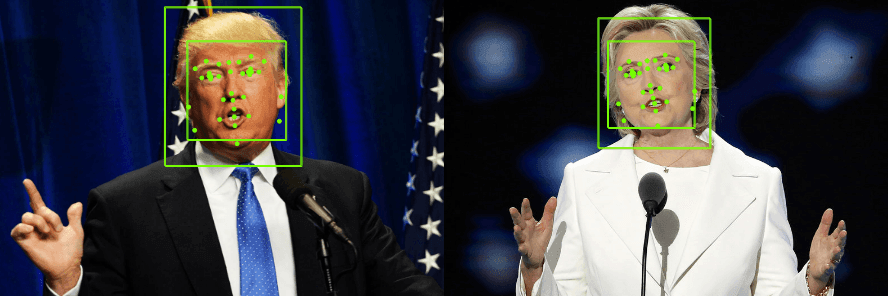Hillary vs Trump: Who is the most emotional during public speeches?
In politics, when reason and emotion collide, emotion invariably wins
The US Presidential Elections are almost here, and what a ride it has been for both candidates. In between scandals and accusations, both campaigns have been working particularly hard on refining their candidate's public image, catering to human emotions that will increase and reinforce their connection to the electorate. Facts don’t seem to matter anymore, it’s all about emotions.
In this study, we will try to understand the emotions that each candidate reveals when performing public speeches. We will be looking with special attention at what are they saying, through the transcripts of their speeches, and how are they saying it, through portrait photos taken during those speeches.
Words
Language is one of the most straightforward ways of communicating an emotion. Through our word choices, we help others interpret and understand our feelings and personality. Political speeches, carefully crafted communications with very specific messages, are a prime example of how politicians have mastered the art of conveying emotions through words.
When Mexico sends its people, they're not sending their best. They're not sending you. They're not sending you. They're sending people that have lots of problems, and they're bringing those problems with us. They're bringing drugs. They're bringing crime. They're rapists. And some, I assume, are good people.
For the purpose of this study, we gathered 107 speech transcripts (55 for Hillary, 52 for Trump) from What the Folly?!, an independent news website specializing in transcribing political speeches. To identify emotions in those speeches we used IBM Watson’s Tone Analyser, a tool that uses state of the art psycholinguistic techniques to automatically identify five types of emotions in text: anger, disgust, fear, joy, and sadness.
Anger is the most common emotion conveyed by both candidates, followed by joy. The difference between both emotions provides us with an interesting look at each candidate’s personality: Hillary is 50% more angry than joyful, while Trump is 170% angrier.
Facial Expressions
Another avenue of identifying emotions is through nonverbal communication, such as facial expressions. Humans have a natural capacity to understand facial expressions and their associated emotional states. Just like the speeches themselves, politicians take great care with their facial expressions and the message they are conveying.

We collected 205 photos (102 for Hillary, 103 for Trump) from Google Images, portraying the candidates during public speeches. Next, we used Google Cloud Vision to automatically identify facial attributes related to four emotions: anger, joy, sorrow, and surprise.
Joy takes over as the most common emotion for both candidates. Hillary has the most joyful appearance, while Trump complements his speech with angrier facial expressions.
So, who’s the most emotional candidate?
Both candidates express a diverse set of emotions during speeches. Some particular findings:
- Trump is the angriest, Hillary the most joyful.
- Both candidates express more anger in words than facial expressions.
- Joy is more frequent in facial expressions.
- Trump expresses a balanced set of emotions through his facial expressions, while Hillary expresses mostly joy.
How do the results of this study make you feel? Leave your opinion in the comment section below!